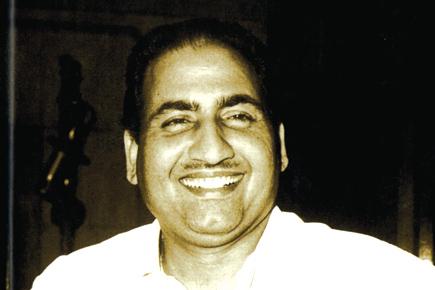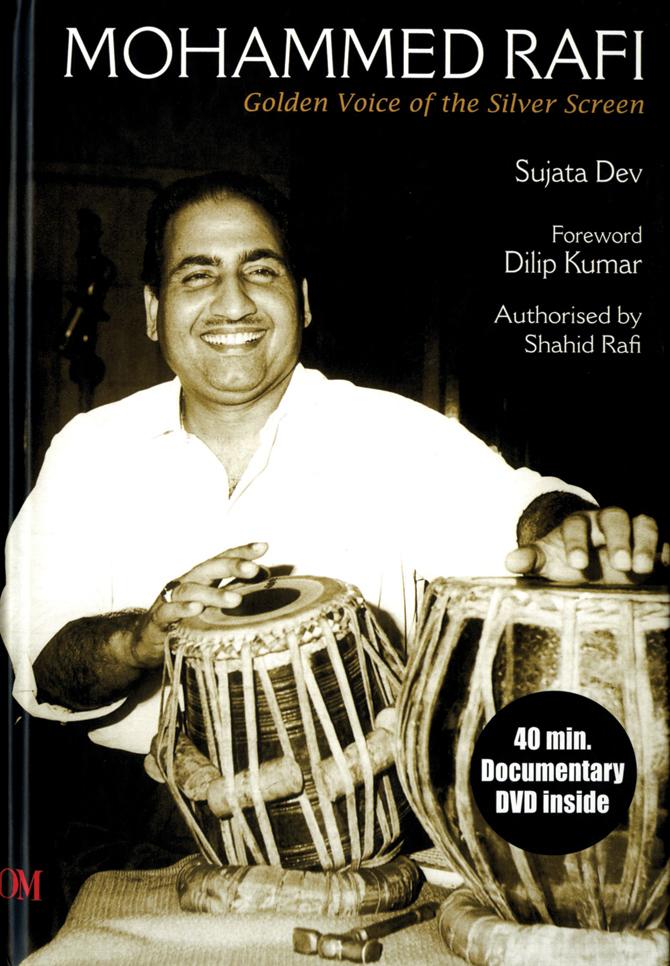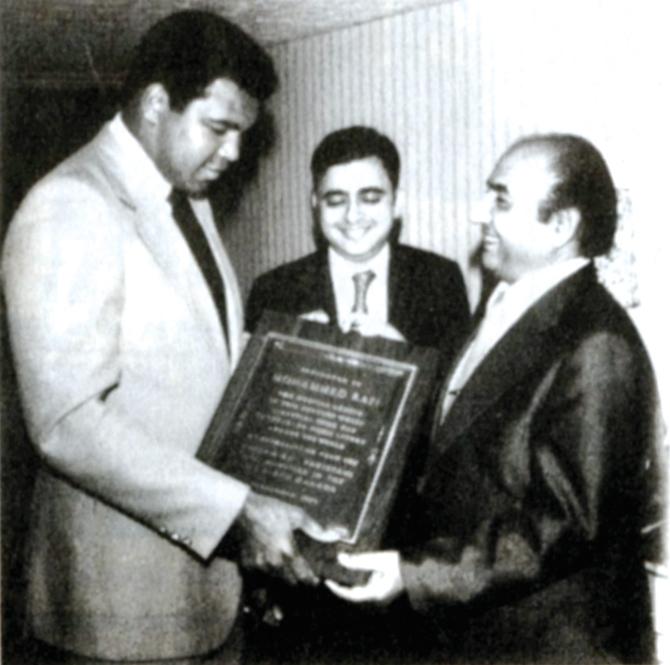After arriving in Bombay from Lahore with his mentor Hameed, the young Mohammed Rafi realised music director Naushad had become a name to reckon with

Mohammed Rafi
![]() After arriving in Bombay from Lahore with his mentor Hameed, the young Mohammed Rafi realised music director Naushad had become a name to reckon with. Hameed thought of an idea, and travelled all the way to Lucknow to get a recommendation letter from Naushad's father. The ploy worked, and in 1944, the playback singer sang 'Hindustan ke hum hain, Hindustan hamaara' for Naushad in 'Pehle Aap'.
After arriving in Bombay from Lahore with his mentor Hameed, the young Mohammed Rafi realised music director Naushad had become a name to reckon with. Hameed thought of an idea, and travelled all the way to Lucknow to get a recommendation letter from Naushad's father. The ploy worked, and in 1944, the playback singer sang 'Hindustan ke hum hain, Hindustan hamaara' for Naushad in 'Pehle Aap'.
ADVERTISEMENT

Mohammed Rafi: Golden Voice of the Silver Screen, Sujata Dev, Om Books International, Price Rs 595
In 'Mohammed Rafi: Golden Voice of the Silver Screen', author Sujata Dev treats readers with numerous such facts about the ace singer. A foreword by Dilip Kumar, the extensive research, interviews with numerous musicians, and the accompanying 40-minute documentary DVD add value. As the book has been authorised by son Shahid Rafi, one gets to know many new things.

With another singing great and Rafi's contemporary, Kishore Kumar. Rafi, quiet and reserved by nature had a good sense of humour and enjoyed the playfulness of Kishore Kumar
Yet, there's a problem. This mainly has to do in the way the biography has been constructed. It starts brilliantly by talking of his early years in Kotla Singh Sultan near Amritsar, followed by the days when he worked as a barber in his brother's shop in Lahore. His struggle in Bombay, when he stayed in Bhendi Bazaar and frequented Zam Zam restaurant, is described vividly.
However, till that time, it seems like a chronological account of his life. Suddenly, it changes style and begins to analyse his music and his associations in great detail. While the author has done a lot of hard work there, this approach sometimes leads to repetition and an absence of flow.

Legendary boxer Muhammad Ali felicitates Mohammed Rafi during one of his tours abroad. Rafi, who loved watching boxing, requested the ogranisers on his tour to Chicago to get him an appointment with Muhammad Ali. Otherwise a busy man, Ali visited Rafi at his hotel room when he found out that the legendary Indian singer wanted to meet him
There are two chapters, for instance, that talk of Rafi's work with different music directors and lyricists. Some composers like Naushad, SD Burman, Khayyam, OP Nayyar and Madan Mohan are common in both, while others appear only in the second. Similarly, there are two chapters on songs with different actors, when they could have been clubbed into one. The fact that he did 4,425 Hindi film songs, 310 non-Hindi film songs and 328 non-film songs is mentioned twice in four paragraphs.
On the positive side, Dev covers certain areas like Rafi's stage shows, his much-discussed differences with Lata Mangeshkar over royalties, his sheer generosity and humility, his personal life and his death on July 31, 1980, in great detail. Through conversations with current musicians like Sonu Nigam, Himesh Reshammiya, Kailash Kher and Javed Ali, she describes how much Rafi is admired by the younger generation. The nuggets of trivia and statistical details will specially delight hardcore fans. Though the editing could have been much crisper, the book has many factors that would interest those who've grown up on and idolised the legendary singer. The fact that it brims with nostalgia makes it all the more enjoyable.
 Subscribe today by clicking the link and stay updated with the latest news!" Click here!
Subscribe today by clicking the link and stay updated with the latest news!" Click here!






